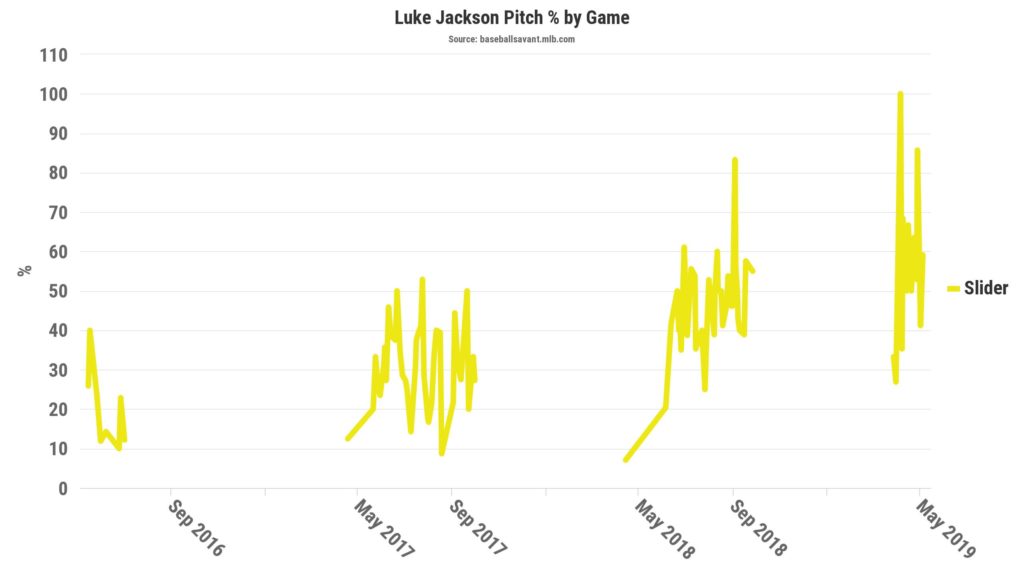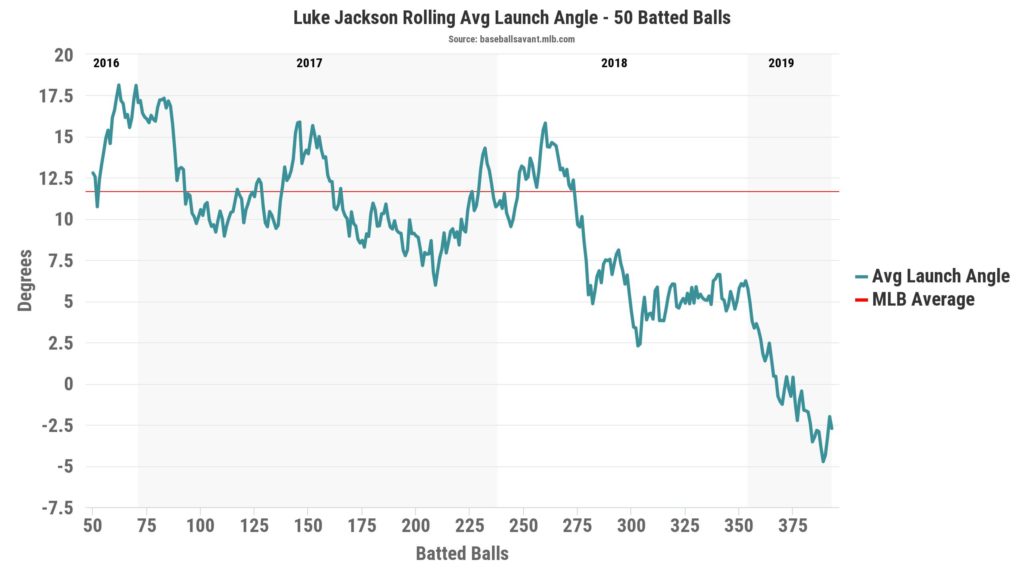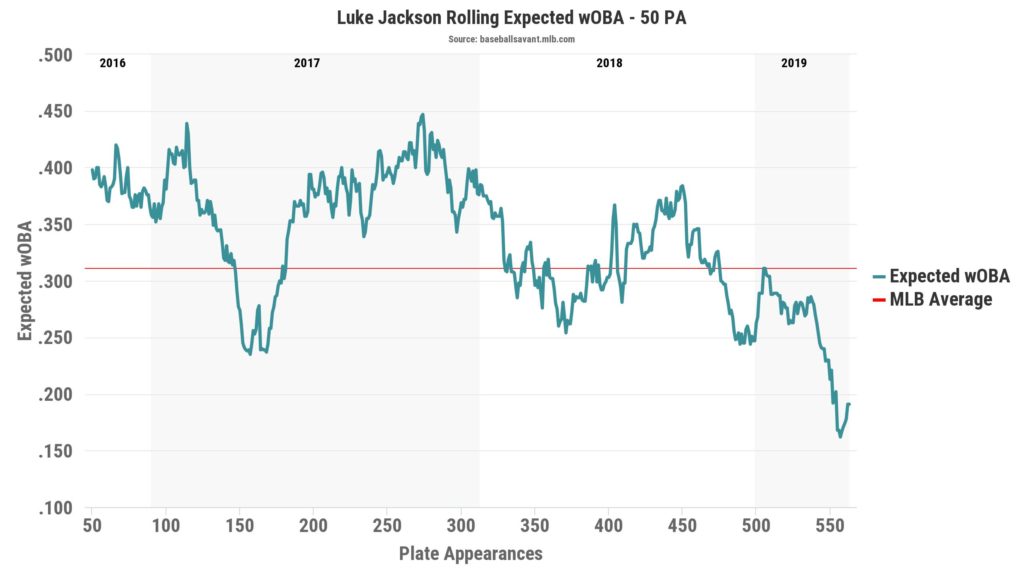
Atlanta’s bullpen woes have been much-discussed, but there have been some bright spots. Jerry Blevins hasn’t given up a hit yet! Josh Tomlin has been more helpful than a scrap-heap pickup typically should. Brightest of all, however, has been Luke Jackson. In 16 innings, Jackson has a 2.25 ERA, as many strikeouts as baserunners (19), and a confident presence on the mound. Is Jackson’s performance so far in 2019 to be believed, or is this just a small sample flash in the pan?
Baseball-reference.com measures the importance of a given at-bat with a statistic called Li (Leverage index). A completely average situation is given an Li of 1.00. Bases loaded in the 9th in a tie game? Li will be greater than 1. 8th inning of a 17-3 blowout? It will be lower than 1. In 2018, Luke Jackson’s average leverage index was 0.64. Of the 20 Brave pitchers to throw at least 20 innings last season, none had a lower aLi than Jackson. Brian Snitker saved Jackson for blowouts and mop-up duty, and it made sense why. Jackson had been an erratic young reliever since coming to Atlanta, flashing talent but struggling with consistency. He finished 2018 with a 4.43 ERA, not the mark of an elite reliever in the making.
In 2019, Luke Jackson hasn’t simply been better – he has been trusted. Jackson’s aLI in 2019 is 1.09, and only A.J. Minter has entered into more high leverage situations (8) than Jackson (6). What made Jackson into such a trusty bullpen ace in the making? What changed?
On April 15, 2018, the Braves designated Luke Jackson for assignment. In 1.1 innings in the young season, Jackson had issued two walks and given up two runs. It was an ignominious debut for a disappointing prospect, signaling more disappointment. He had a career 5.08 FIP. Jackson spent the next six weeks at AAA Gwinnett, where he dominated (21.1 innings, 34 K, 1.69 ERA). In early June, he was called back up to Atlanta. Snitker saved Jackson’s first appearance for the lowest leverage possible, giving him the final three innings of a 14-1 blowout of San Francisco, earning Jackson his first career save. In that appearance, Jackson’s pitch selection was 65% four-seam fastball, 20.4% slider, 14% curve. That June 5 appearance is notable, as it is the last time Jackson used his slider on less than 25% of his pitches.
Since his June callup, Jackson has a 3.26 FIP, and he has accomplished this turnaround by trusting his slider more and more. And more, and more:
Now, for more charts! Take a glance at Jackson’s launch angle allowed over recent seasons:
And finally, his xWOBA, according to Statcast:
xWOBA looks like alphabet soup, but it is fairly simple to understand, so don’t be suspicious! Given how hard batters hit the ball and at what angle they hit it, the Statcast database can tell us the likelihood of the result (balls hit X mph in this direction wind up being doubles Y % of the time) and the likely impact of that result (doubles, on average, are worth Z runs to MLB teams). This is just a measure of that. All that matters is seeing how it compares to that red league average line.
Luke Jackson started throwing his slider more and more in June of 2018, and he has become an elite reliever in the process. It’s now his primary pitch, thrown 52% of the time. In an April appearance, 2/3 of Jackson’s pitches were sliders. Batters are hitting .206 against the pitch with a whiff rate of 37.3%. He’s throwing the slider harder than ever, up to 88 mph from 86.9 a year ago. The slider has more movement than ever, with a 2452 rpm spin rate, up from 2293 last year. Jackson’s groundball rate is up to an absurd 72.5%, which probably won’t last. But what is clear is Jackson has found his recipe for success. By embracing his best pitch, Jackson is avoiding hard contact, avoiding home runs, and shutting opponents down. Command and health are never things of permanence when it comes to relievers, so it’s hard to know exactly how long he’ll remain elite, but rest assured that Atlanta’s new bullpen ace isn’t skating by on good batted-ball luck or something like that. He has figured out what it takes for Luke Jackson to succeed, and that’s why Brian Snitker should feel free to use him in many more of those high-leverage innings going forward.







Leave a Reply